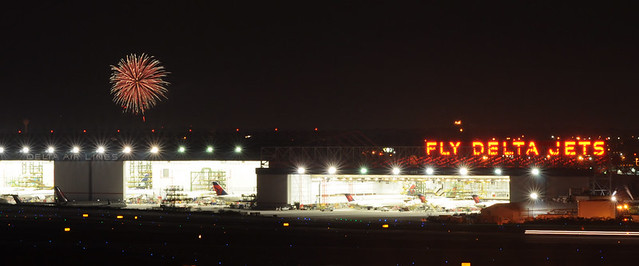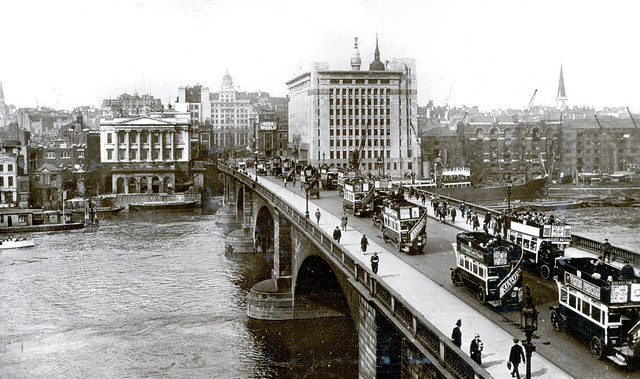Foiled sieges and fake cats: the history of the modern bar
In 1920, a young Atlanta alderman by the name of William Hartsfield began reading speculative literature on the future of what many believed would become a way to transport mail faster. A few visionaries spotted the much more wide-reaching implications of this newfangled technology, the airplane. Hartsfield was one of them, and soon learned of the United States Postal Service’s plan to locate a refueling hub between its New York City and Miami airports for mail planes.
Hartsfield jumped at the opportunity, working together with then-Mayor Walter Sims to secure a five-year, rent-free lease on an abandoned racetrack known as the Atlanta Speedway. Hartsfield partnered with Atlanta’s chief of construction, W. A. Hansell, to transform the speedway into a proper airfield, sodding the field with truckloads of manure that caused an outcry from residents of the downfield town of Hapeville.
As the date the federal government planned to open bidding approached, Hartsfield turned his attention to gaining longer-term access to the land by naming the airstrip Candler Field, a sycophantic ploy to win the loyalty of Asa Candler Jr., who held title to the land. Unswayed by flattery, the eccentric Candler — of Coca-Cola lineage who kept a menagerie of wild animals at his mansion — ensured Hartsfield he would demand payment in full for the property when the five-year lease ended.
When bidding for the postal service refueling station finally opened in 1926, Atlanta submitted its bid with bated breath. To Hartsfield’s chagrin, Atlanta’s westerly neighbor Birmingham submitted a bid for the refueling hub as well. At the time, the cities were nearly identical in regional influence and size, at around 200,000 residents apiece. And Birmingham was perhaps even more strategically located when one examined a map.
Hartsfield went to work, organizing a trip for an assistant postmaster general to visit Atlanta and inspect Candler Field. When the assistant arrived, Hartsfield ferried him across the city with a motorcade flanked by an eight-motorcycle escort. That evening, the scion of Atlanta’s banking community, John K. Ottley(1), Mayor Sims, Georgia Governor Clifford Walker, and Hartsfield, among many others, wined and dined the official before sending him off to a luxury hotel suite for the evening. As Hartsfield later gloated, “No east Indian potentate ever got the attention he did.”
A week later, the Commerce Department designated Atlanta as a stop on the federal airmail route. Hartsfield had, almost singlehandedly, paved the way for Atlanta to become the South’s — and, later, the nation’s — busiest flight hub, connecting millions of national and international visitors every year.(2)
Three centuries before airports became symbols of a city’s connectedness and Hartsfield-Jackson International Airport put Atlanta on the map internationally, Vienna and London were in the midst of their own connectivity renaissances. Unlike the twentieth century’s hubs, in which visitors speaking languages of all stripes sipped lattes and lagers while reading the New York Times between flights, Vienna’s cafes and London’s gin joints were far more provincial in nature. Yet they, like the airport, brought far-flung citizens together like never before.
A siege before the caffeine surge
The Ottoman Empire once stretched from the Persian Gulf in the east to the piedmont just west of Venice’s canals, a distance the equivalent of Atlanta to San Francisco. At the height of its imperial efforts, the Ottoman Empire made multiple attempts to sack the Habsburg Dynasty’s cultural hub of Vienna — first in 1529, another in 1683. Each time, the Viennese rebuffed the onslaught by the Ottoman troops. The story goes that in the aftermath of the Second Siege of Vienna, the Viennese found sacks of strange beans they originally believed to be camel feed. Rather than disposing of the beans, Polish king Jan III Sobieski, who had helped defend Vienna, gave them to one of his officers, Jerzy Franciszek Kulczycki — the uncanny resemblance to the story of Jack and the Beanstalk, be damned.
It was the first time on record coffee had made its way to Europe — it was welcomed with as much aplomb as tobacco had been received on Columbus’ return from the “West Indies” 200 years prior. Kulczycki soon opened Vienna’s first coffeehouse.
Cafe Griensteidl: the First Starbucks?
The next 200 years saw Vienna’s coffeehouse culture grow and thrive. So much so that “by 1900 they had evolved into informal clubs, well furnished and spacious, where the purchase of a small cup of coffee carried with it the right to remain there for the rest of the day…Newspapers, magazines, billiard tables, and chess sets were provided free of charge, as were pen, ink, and (headed) writing paper.”(3)
These caffeinated social clubs helped distinguish Vienna from other cultural centers like Berlin, Paris, and London — the last of which was, concurrent to the Viennese cafes, pronouncedly more besotted, as we’ll explore below.
The most famous of Vienna’s coffeehouses, Cafe Griensteidl, saw many influential authors and philosophers of the early 1900s enjoy a cuppa, including, Hugo von Hoffmansthal, Theodor Herzl, and likely Sigmund Freud himself, although he found Vienna provincial and preferred Swiss cities.
Today, we still enjoy the legacy of these Viennese coffeehouses when we order a latte at a Starbucks coffee bar, pour half the contents out, and fill the space with whiskey from a hip flash that we carry around in our left boot. Our cafes today carry a mantle borne down through the ages by West Coast entrepreneurs, who perfected the Viennese model by adding a dash of indie music and bespoke-seeming branding before scaling the concept to the rest of the world.
The rise of the London dram shop
Five years after Kulcynski opened Vienna’s first coffeehouse, achipelagic Europeans — Londoners, more specifically — got their first taste of gin when William of Orange acceded to the throne. For years, French brandy had been the British spirit of choice, but political and religious conflict between the cross-Channel neighbors led the British Government to pass various acts restricting brandy imports. In 1690, the Government ended the monopoly held for years by the London Guild of Distillers. A range of distillers dove headfirst into the deep ends of the gin pool, encouraged by various politicians, including Queen Anne herself.
As more efficient industrial agriculture practices drove food prices down, Brits — especially cosmopolitan Londoners — had more disposable income. Lacking bowling alleys and Bieber concerts, Londoners took to drink as a form of communal gathering. Centuries prior, visionary entrepreneurs had foreseen that many Brits preferred to down their drinks away from the confines of their homes and had thus introduced thousands of taverns, inns, and alehouses across the country. There, patrons would gather around rough-hewn tables to drink tankards of ale and presumably plot coups that never made it past midnight.
Gin joints & miserable livers
Gin revolutionized these parochial gathering places. Instead of serving patrons at picnic tables, the proprietors of “dram shops”, as they came to be called, centralized distribution of beverages at a main bar. These “gin joints” blossomed throughout the early 1700s, and Brits’ spirits consumption tripled. As early as 1721, Middlesex magistrates decried the pervasive drunkenness they witnessed in the streets. Moving swiftly, they helped pass the Gin Act of 1736, which taxed retail sales of gin at 20 shillings a gallon and required gin joint proprietors to pay a £50 annual license — roughly £7,000 at today’s rates — all but pricing out everyone in the market.
Wily barkeeps introduced an ingenious mechanism to circumvent the de facto prohibition imposed by the 1736 Gin Act. Thirsty Londoners would deposit a shilling in a cat’s paw outside of an unassuming residence. The shilling traveled down a tube, and when the barkeep inside received the money, the barkeep would pour a shot’s worth of gin down the tube to the patron’s mouth. Thus was born the precursor to two 20th century innovations: the Prohibition-style speakeasy, and the modern-day ice luge.
Old Tom Gin & Prohibition-era preferences
The gin-paw invention was known as “Old Tom” — an homage to the tom cat that served as gin courier. In time, gin earned the nickname “Old Tom” as well, specifically a type of sweeter gin. The name still stands today with brands like Ransom Old Tom Gin and Anchor Old Tom Gin leading the craft spirits category.
A century after the first gin joints opened, they resurfaced serving not just gin, but wine and beer as well. They were the precursor to the modern bar as we know it.
Of course, the party didn’t truly start until proprietors added whiskey to the fray. By the time the U.S. enacted that Great Failed Experiment, Prohibition, in 1920, rye whiskey had replaced cognac as the spirit of choice, planting itself firmly in the minds of thirsty bar-goers. Prohibition was to the whiskey industry nothing short of an earthquake — a rifting of plates, a shifting of palates.
Post-Prohibition plate tectonics
In the winner’s circle: Blended Canadian whiskey, with its mild manners and smooth finish, vaulted like an Olympic gymnast into the minds of consumers. Not to mention:
In the post-Prohibition era, bourbon proved as resilient as the corn it derived from.
Not making the podium: Rye whiskey fell off the bar stool, and nearly off the map. Irish whiskey, in the wake of Prohibition and the 1919 closure of British markets, almost went extinct entirely.
A modern-day renaissance
But today, we’re seeing many delicious pre-Prohibition styles of spirit make a comeback. Old Tom Gin and its more mature cousin, barrel-aged gin, are seeing glimmers of shelf space. Irish whiskey is in the throes of a real heater. And perhaps most warming to us: rye whiskey is in the midst of a renaissance.
Why so warming to us? Because the first spirit off our Scottish-style twin copper pot stills is no less than a whiskey made from 100% malted rye, one of America’s native grains.
While we’ve barreled 95% of this American Single Malt Rye, we’ve chosen a select number of bottles to release to you, our early supporters. This one-time-only release offers a taste of delicious chocolate, hazelnut & pepper notes before the single malt spends time maturing in new American oak casks to become what may very well be the quintessential Southern single malt whiskey.
Join us for BBQ, Bluegrass, and Our First Bottle Release on Saturday, September 10 to help us celebrate this milestone for what we hope may very well become the quintessential Southern single malt whiskey and help put Atlanta on the map when it comes to craft whiskey.
Not to mention, each pass comes with a tour of the production area, including our gorgeous, hand-hammered copper pot stills and our rickhouse full of new American oak barrels.
We hope you’re as excited about this monumental event as we are.
— — — — —
(1) Our neighbor street in Armour Yards is Ottley Drive.
(2) Allen, Frederick, Atlanta Rising, Taylor Trade Publishing (1996)
(3)Watson, Peter, The Modern Mind: An Intellectual History of the 20th Century, Harper Collins (2011).



